
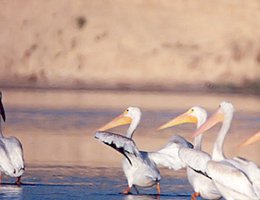
The Central District’s project provides habitat for many species of fish and wildlife. Lake McConaughy, which is 22 miles long and three miles wide when full, and the surrounding area provides a variety of habitats ranging from open sandy beaches to riverine marshes and cold-water streams. The lake is home to numerous species of amphibians and reptiles, in addition to many species of fish and mammals. More than 300 species of birds have been spotted around Lake McConaughy, including large numbers of seagulls, ducks, geese and shorebirds.
Sandhill cranes annually visit the west end of the lake during their migration to and from nesting grounds in Texas.
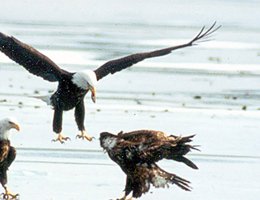
Bald eagles congregate during the winter months below the Kingsley and Johnson No. 2 hydroplants, attracted by the turbulent, ice-free water resulting from operation of the plants.
Least terns and piping plovers, listed respectively as endangered and threatened species, nest in significant numbers on the beaches at Lake McConaughy. Central has implemented measures to protect the nesting sites and to educate the public about the two shorebirds and their nesting habits.
Central also works with private organizations and government agencies to establish and enhance wildlife habitat areas on District property and other areas within Central’s service area.
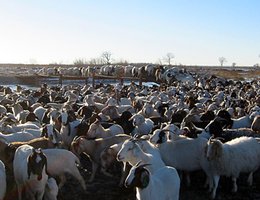
As part of its new license to operate its hydroelectric facilities, obtained from the Federal Energy Regulatory Commission in 1998, the Central District acquired a 4,000-acre island in the midst of the Platte River’s channel to improve and manage as wildlife habitat. The seven-mile-long Jeffrey Island, located between Lexington and Overton, is suitable habitat for waterfowl, sandhill cranes, least terns, piping plovers, and many other species of wildlife.
One of the challenges the Central District faced in managing the island’s habitat was the removal and control of noxious weeds and invasive vegetation that, if left unchecked, would obstruct the growth of desirable plants and choke the river channel. By controlling weeds, removing trees and opening river channels, CNPPID is creating habitat that is attractive for migratory birds.
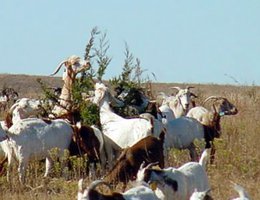
The habitat improvement project included removal of more than 300 acres of trees, mainly mature cottonwoods, and digging shallow sloughs or channels where cranes can rest and feed.
Central has used both mechanical and chemical methods to control invasive plant growth, but is also trying a somewhat unusual method approach: goats.
The Central District introduced a herd of 2,700 Spanish and Boer goats onto the island in 2004. The goats prefer to eat weeds rather than the grasses on which cattle graze. The goats will eat leafy spurge, false indigo, dogwood, wild plum, buck brush, woody shrubs, seedling cottonwoods, red cedar, musk thistle, purple loosestrife, and just about any other plant that is considered undesirable by habitat managers. In effect, CNPPID is using goats in place of both chemicals and mechanical methods for controlling weeds on the island.
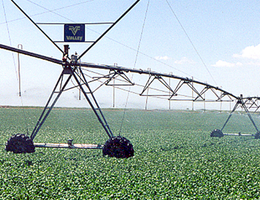
Through the years, politicians, economists, farmers and many other people familiar with Nebraska have often referred to irrigation as the “lifeblood” of the state’s economy. While the state is considered rich in water resources, both surface water and groundwater, care must be taken to conserve and protect this precious resource for future generations.
Center pivots, one of the most efficient tools farmers can use to irrigate their crops, are used in large numbers in the Central District’s service area. By 2005, more than 250 pivots were taking water from Central’s canal system, instead of tapping into the area’s groundwater supply.
More than 8 million acres in Nebraska are irrigated, approximately 7 million from groundwater sources and about 1 million with surface water. Conflict over available water supplies is inevitable, making integrated management of water resources critical for the future of agriculture in the state. At the same time, water demands for municipal and industrial use, for recreation, and for wildlife habitat are increasing.
Meeting these demands is difficult, particularly during times of drought. Much of the Great Plains and mountain states have been experiencing severe drought conditions since 2000, which makes wise management, conservation, and stewardship of water resources even more important.